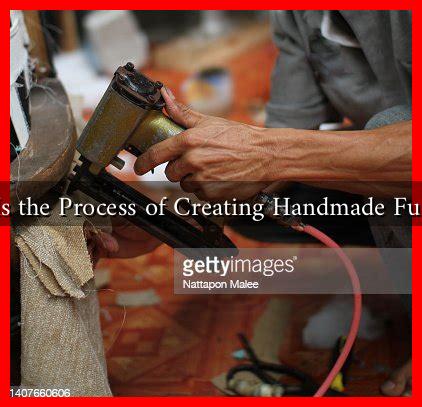-
Table of Contents
What Is the Process of Creating Handmade Furniture
Handmade furniture has gained immense popularity in recent years, as consumers increasingly seek unique, high-quality pieces that reflect their personal style. Unlike mass-produced items, handmade furniture is crafted with care and attention to detail, often resulting in superior durability and aesthetic appeal. This article explores the intricate process of creating handmade furniture, from initial design to the final finishing touches.
The Design Phase
The journey of creating handmade furniture begins with the design phase. This is where the vision for the piece takes shape, and several key steps are involved:
- Conceptualization: The designer brainstorms ideas based on client preferences, current trends, and functional requirements.
- Sketching: Initial sketches are created to visualize the design. This can be done by hand or using design software.
- Material Selection: Choosing the right materials is crucial. Common choices include hardwoods like oak, walnut, and cherry, as well as metals and upholstery fabrics.
For example, a designer might choose walnut for its rich color and durability when creating a dining table, while opting for a lighter wood like pine for a more rustic look.
Prototyping and Planning
Once the design is finalized, the next step is prototyping. This phase involves creating a model of the furniture piece to test its functionality and aesthetics.
- Scale Models: Designers often create smaller versions of the furniture to assess proportions and design elements.
- Client Feedback: Presenting the prototype to clients allows for adjustments based on their feedback.
- Final Plans: Detailed plans and measurements are drafted to guide the construction process.
According to a survey by the American Home Furnishings Alliance, 70% of consumers prefer custom furniture that meets their specific needs, highlighting the importance of this phase.
Crafting the Furniture
The crafting phase is where the magic happens. Skilled artisans bring the design to life using various tools and techniques:
- Cutting: Wood is cut to size using saws, ensuring precision in dimensions.
- Joinery: Different joinery techniques, such as dovetail or mortise and tenon, are employed to connect pieces securely.
- Sanding: The surfaces are sanded to achieve a smooth finish, which is essential for both aesthetics and safety.
- Assembly: The individual components are assembled, often requiring clamps and adhesives to ensure stability.
Artisans may also incorporate unique features, such as inlays or carvings, to enhance the piece’s character. For instance, a coffee table might feature a hand-carved design on its legs, showcasing the artisan’s skill.
Finishing Touches
The final step in creating handmade furniture is the finishing process, which not only enhances the appearance but also protects the wood:
- Staining: A stain can be applied to enhance the wood’s natural grain and color.
- Sealing: A protective sealant, such as polyurethane or oil, is used to guard against moisture and wear.
- Upholstery: If the piece includes fabric, upholstery is added, often using high-quality materials for comfort and durability.
According to a report by the Furniture Today, handmade furniture can last up to three times longer than mass-produced alternatives, making the finishing process even more critical for longevity.
Conclusion
Creating handmade furniture is a meticulous process that combines artistry, craftsmanship, and attention to detail. From the initial design phase to the final finishing touches, each step is essential in producing a unique piece that stands the test of time. As consumers continue to seek personalized and sustainable options, the demand for handmade furniture is likely to grow. By understanding the intricate process behind its creation, buyers can appreciate the value and craftsmanship that goes into each piece.
For more insights into handmade furniture and design trends, consider visiting Furniture Today.

